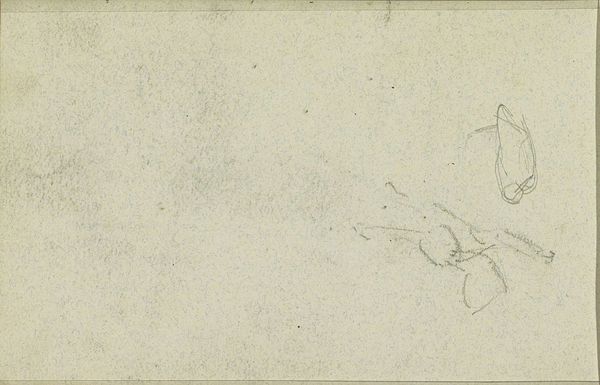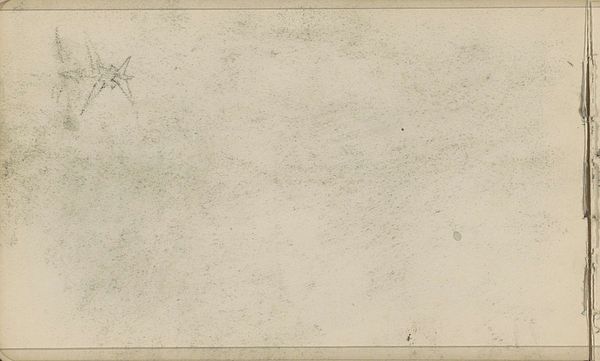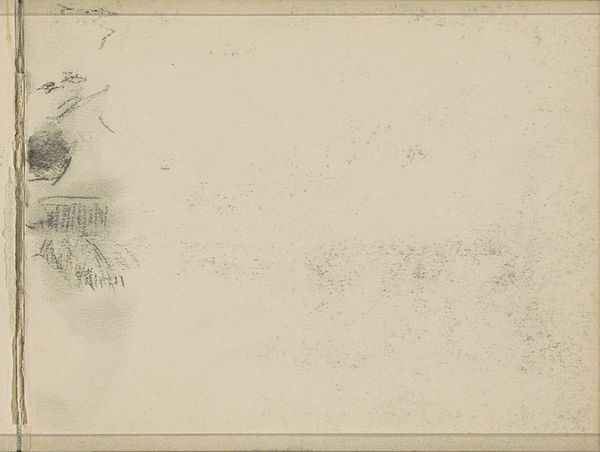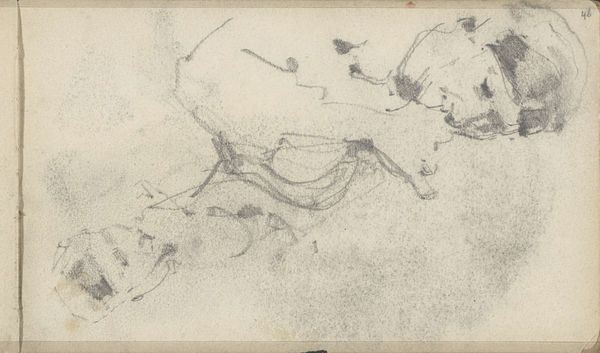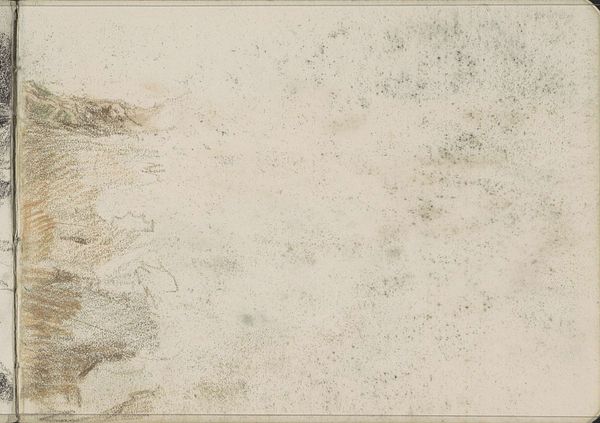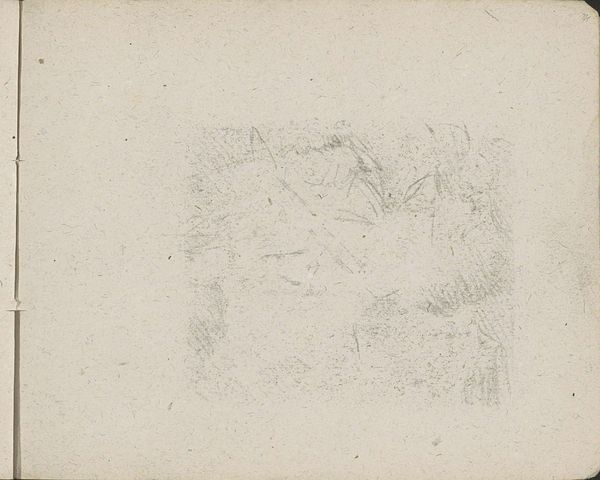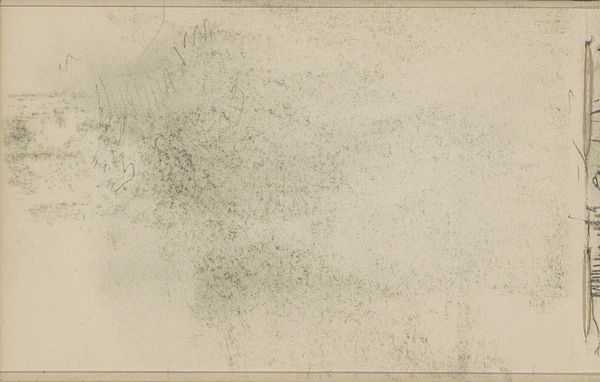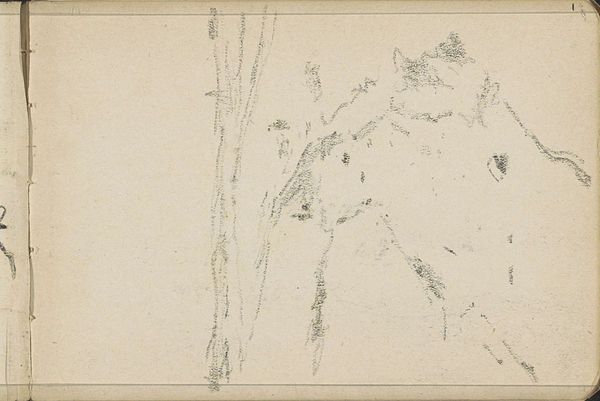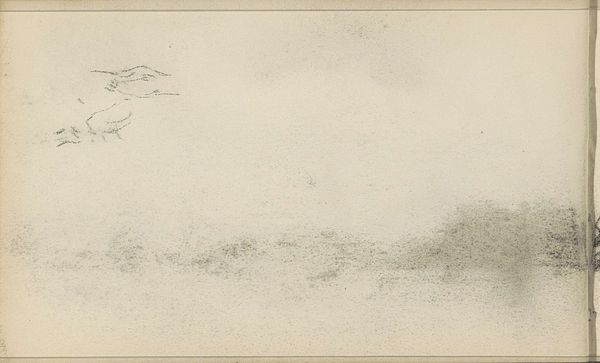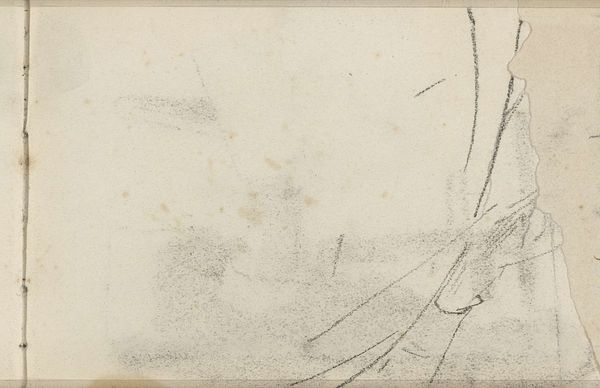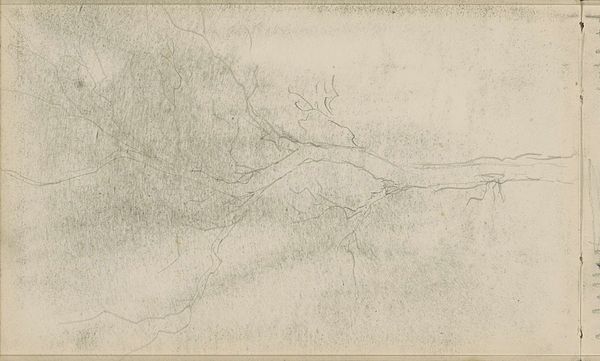
Copyright: Rijks Museum: Open Domain
Editor: Here we have Johan Antonie de Jonge's "Landschap," created sometime between 1881 and 1927, using watercolor and pencil. It strikes me as very subtle, almost dreamlike, in its muted tones and minimal detail. What do you see in this piece? Curator: This work speaks to the powerful symbolism inherent in landscapes. Notice how the bare trees suggest vulnerability and perhaps the passage of time. The muted palette, nearly monochrome, could signify memory – landscapes recalled are often softened by the filter of time. What sort of memory does this imagery evoke for you? Editor: I hadn't considered it that way. The washed-out effect, now that you mention it, does have a melancholic quality, like a faded photograph. The indistinct shapes almost feel universal, a landscape both real and imagined. Curator: Exactly. Consider how different cultures imbue trees with spiritual significance – growth, resilience, connection to ancestors. Here, despite their bareness, they might symbolize enduring strength within apparent fragility. The vagueness almost suggests a tabula rasa, a blank slate of experience. Does this change how you see the composition? Editor: It does! Now, the open space doesn't feel empty, but full of potential. The bare trees act almost like guides. Curator: Precisely! Landscape art often reflects humanity's evolving relationship with the natural world. We find ourselves mirrored within its vistas. This piece, in its subtlety, leaves space for contemplation and personal narrative. Editor: I appreciate how you connected those cultural symbols. It makes me think differently about landscape art from now on. Curator: Indeed, the language of symbols evolves. Visual imagery is rarely neutral; instead, they act as touchstones between artist, artwork, and beholder.
Comments
No comments
Be the first to comment and join the conversation on the ultimate creative platform.

